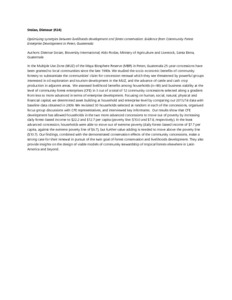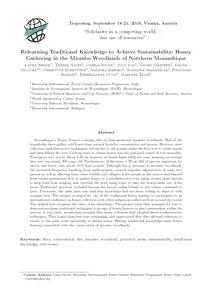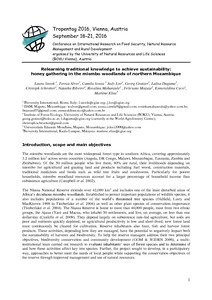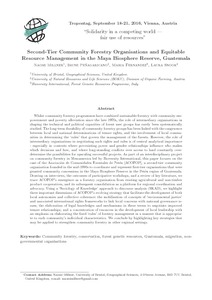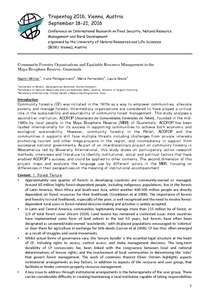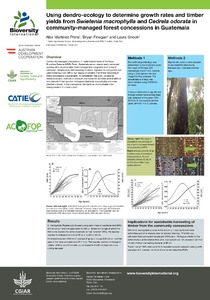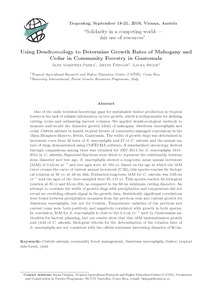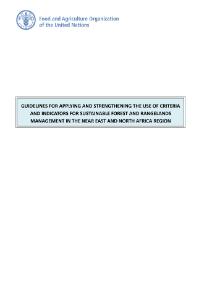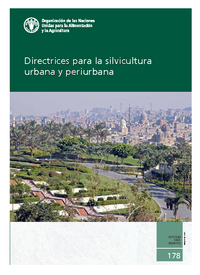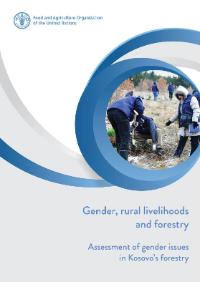Perception of local community and the willingness to pay to restore church forests: the case of Dera district, northwestern Ethiopia
In the Ethiopian highlands, church forests have a substantial contribution to landscape restoration, and conservation of endangered indigenous tree species and biodiversity. However, the environmental and economic benefits of church forests are declining due to a combination of economic, environmental, and cultural factors. This study was conducted in Dera district, Ethiopia, to assess the perception of local communities on church forests and investigate the willingness of local communities to pay to manage and protect church forests.
Prosperity prospects in contested forest areas: evidence from community forestry development in Guatemala and Nicaragua
Tropentag, September 18-21, 2016, Vienna, Austria
“Solidarity in a competing world —
fair use of resources”
Prosperity Prospects in Contested Forest Areas: Evidence from
Community Forestry Development in Guatemala and Nicaragua
Dietmar Stoian
1
, Aldo Rodas
2
, Jessenia Arguello
3
1
Bioversity International, Healthy Diets from Sustainable Food Systems Initiative, France
2
Ministry of Agriculture and Livestock, Guatemala, Natural Resources and Agrotourism,
3
Relearning traditional knowledge for sustainability: honey gathering in the Miombo Woodland of Northern Mozambique
Mozambique's Niassa Reserve contains Africa's best preserved miombo woodlands. Half of the households there gather wild honey from natural hives for consumption and income. However, most collectors used destructive techniques: setting fire to the grasses under the hive tree to create smoke and then felling the tree. Cutting trees to obtain honey was the principal source of tree mortality. Trees grow very slowly, about 0.25 cm diameter at breast hight [dbh] per year, meaning an average hive tree was nearly 200 years old.
Relearning traditional knowledge for sustainability: honey gathering in the Miombo Woodland of Northern Mozambique
Mozambique's Niassa Reserve contains Africa's best preserved miombo woodlands. Half of the households there gather wild honey from natural hives for consumption and income. However, most collectors used destructive techniques: setting fire to the grasses under the hive tree to create smoke and then felling the tree. Cutting trees to obtain honey was the principal source of tree mortality. Trees grow very slowly, about 0.25 cm diameter at breast hight [dbh] per year, meaning an average hive tree was nearly 200 years old.
Second-tier community forestry organisations and equitable resource management in the Maya Biosphere Reserve, Guatemala
Whilst community forestry programmes have combined sustainable forestry with community empowerment and poverty alleviation since the late 1970s, the role of intermediary organisations in shaping the technical and political capacities of forest user groups has rarely been systematically studied. The long-term durability of community forestry groups has been linked with the congruence between local and national determinations of tenure rights, and the involvement of local communities in determining the ‘rules' that govern the management of the forests.
Second-tier community forestry organisations and equitable resource management in the Maya Biosphere Reserve, Guatemala
Community forestry (CF) was initiated in the 1970s as a way to empower communities, alleviate poverty and manage forests. Intermediary organisations are considered to have played a critical role in the sustainability and equitability of community forest management. This study analyses a second-tier institution, ACOFOP [Asociación de Comunidades Forestales de Petén], founded in the mid-1990s by local people in the Maya Biosphere Reserve [MBR] of Guatemala. ACOFOP has been
Using dendroecology to determine growth rates of mahogany and cedar in community forestry in Guatemala
One of the main technical knowledge gaps for sustainable timber production in tropical forests is the lack of reliable information on tree growth, which is indispensable for defining cutting cycles and estimating harvest volumes. We applied dendroecological methods to measure and model the diameter growth (dbh) of mahogany Swietenia macrophylla and cedar Cedrela odorata in humid tropical forests of community-managed concessions in the Maya Biosphere Reserve, Petén, Guatemala. The width of growth rings was determined in increment cores from 32 trees of S. macrophylla and 27 of C.
GUIDELINES FOR APPLYING AND STRENGTHENING THE USE OF CRITERIA AND INDICATORS FOR SUSTAINABLE FOREST AND RANGELANDS MANAGEMENT IN THE NEAR EAST AND NORTH AFRICA REGION
The aim of the practical guidelines presented in this document is to support the adoption and usability of the criteria and indicators (C&I) for Sustainable Management of Forests and Rangelands (SFRM) adopted by the 22nd Session of the Near East Forestry and Range Commission (NEFRC). The guidelines are based on the review of existing literature and on consultations with national experts and relevant institutions in Morocco, Sudan and Tunisia regarding challenges identified in the use of the prop osed C&I for SFRM.
Directrices para la silvicultura urbana y periurbana
Este documento es el resultado final de ese proceso. Dirigido a una audiencia mundial – que comprende las instancias decisorias urbanas, funcionarios públicos, asesores políticos y demás partes interesadas – contribuirá al desarrollo de bosques urbanos y periurbanos que ayuden a las ciudades a resolver sus exigencias actuales y futuras de productos forestales y servicios del ecosistema.
Gender, rural livelihoods and forestry
The main purposes of this research are to identify and analyse the role of women and men in the forestry sector in Kosovo, and women’s and men’s ownership and use of forests. The report also aims to analyse the gender issues within the institutional policy and legal framework that governs forest management, in order to provide recommendations on how to mainstream gender in forest policies in Kosovo more effectively.

